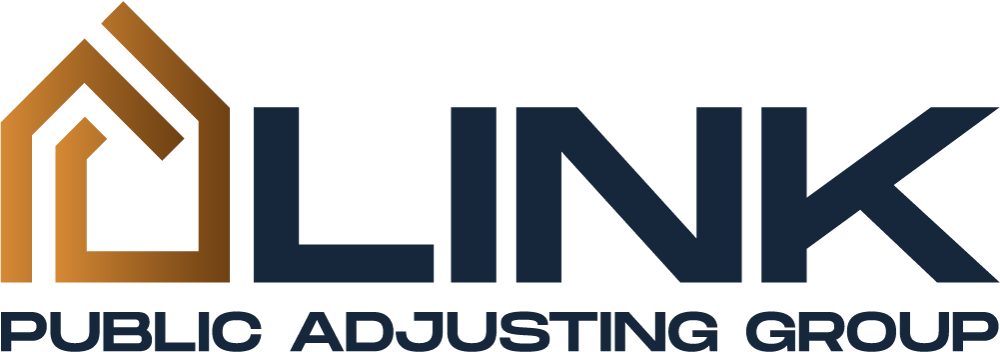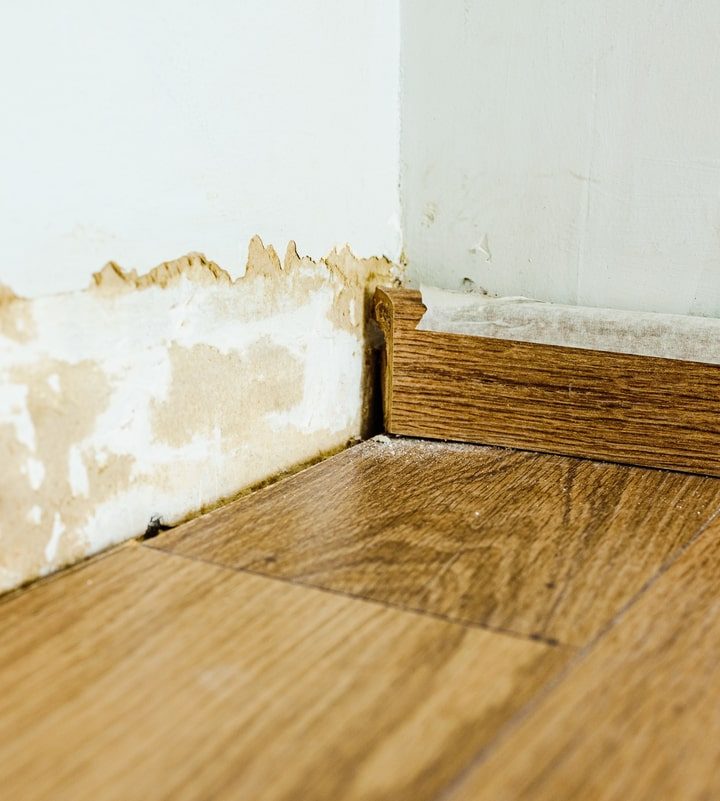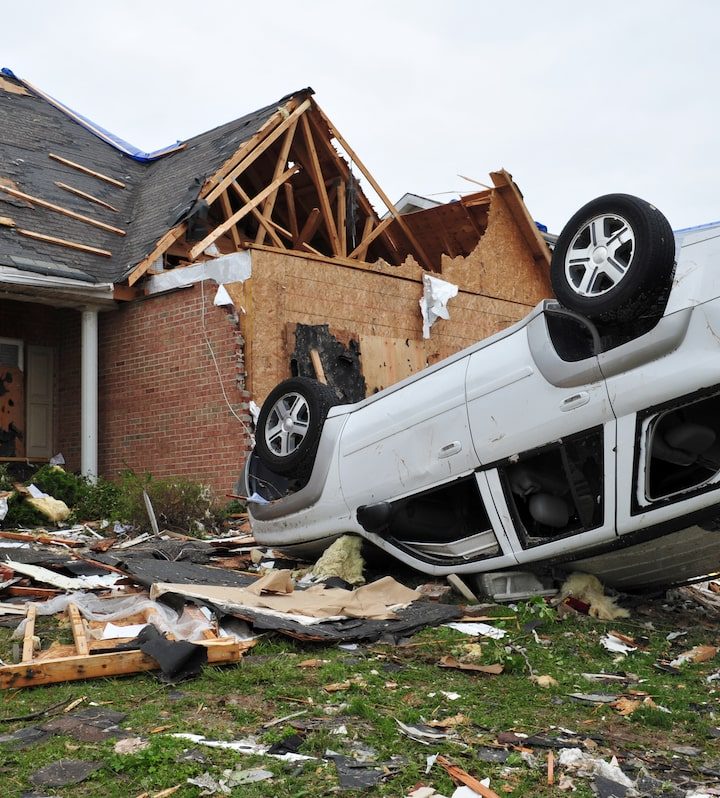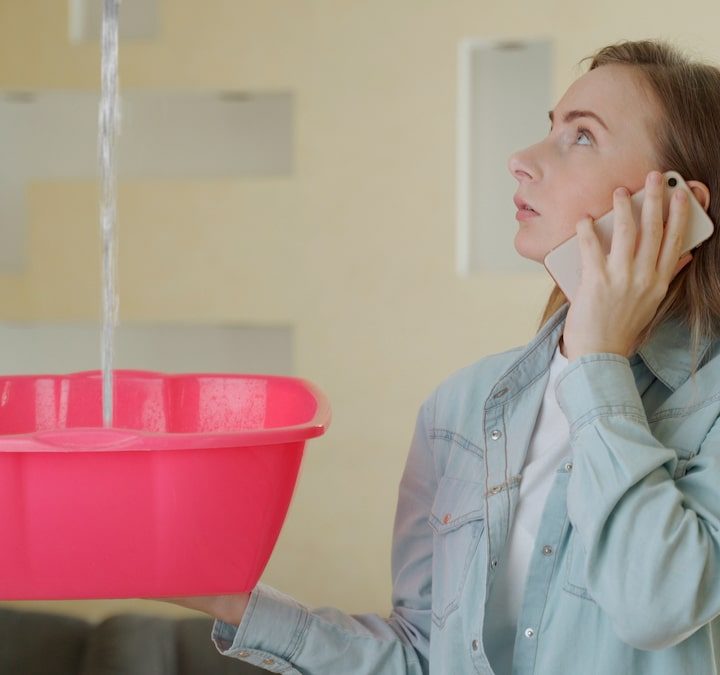The Ultimate Guide to Water Damage Restoration, Prevention, And Repair

Mitigating Water Damage on Walls: Prevention and Repair Strategies
March 26, 2023Are you tired of dealing with the headache of water damage in your home or business? From burst pipes to natural disasters, damage caused by water can strike at any time and can be a major hassle to deal with. But fear not, because Link Public Adjusters has the ultimate guide to water damage restoration, prevention, and repair.
In this comprehensive guide, we’ll cover everything you need to know to protect your property from damage caused by water, including tips for prevention, steps for restoration, and techniques for repairing the damage. Whether you’re a homeowner, renter, or business owner, this guide has everything you need to keep your property safe and secure. So, let’s dive in and discover the ultimate solutions for all your damage caused by water woes.
Understanding Water Damage And Water Source
Water damage can be a devastating experience for homeowners and businesses alike. Understanding the types and causes of damage can help you prevent and respond to potential damage more effectively. There are three main categories of damage: clean water, gray water, and black water.
Clean Water Damage
Clean water damage is a category of damage that occurs from a source of water that does not pose a threat to human health. This type of damage typically results from a burst pipe, leaky faucet, or other plumbing issues. While clean damage may not contain harmful contaminants, it can still cause significant damage to your property if left untreated. Water from a clean source can seep into walls, floors, and other areas of your home or business, causing warping, staining, and other types of damage.
It’s important to address clean damage quickly to prevent further damage and the growth of mold or bacteria. The restoration process for clean damage typically involves drying out the affected area and repairing any structural damage. Depending on the extent of the damage, this may involve removing and replacing damaged materials or performing other repairs. While clean water issues may not pose an immediate health risk, it’s important to take preventative measures to avoid future issues, such as ensuring proper plumbing maintenance and addressing any leaks or issues promptly.
Gray Water Damage
Gray water damage is a type of damage that is caused by water that contains some level of contaminants but is not considered to be highly hazardous. Gray water can come from sources such as dishwashers, washing machines, or showers, and may contain substances like soap, hair, or food particles. While gray water is not typically considered to be as dangerous as black water, it can still pose health risks if not properly addressed.
Gray water issues can lead to issues such as mold growth, foul odors, and structural damage if left untreated. It’s important to address gray water damage as soon as possible to prevent these issues from developing. In some cases, professional damage restoration services may be necessary to properly address the damage and prevent further issues from occurring.
Black Water Damage
Black water damage is a severe type of damage that occurs when water is contaminated with harmful substances like sewage, chemicals, and bacteria. This type of damage can pose serious health hazards and requires immediate attention from professionals. Black water problems can be caused by natural disasters, like floods, or by man-made events, like sewage backups or toilet overflows.
Due to the hazardous nature of black water, it’s important to take safety precautions when dealing with it. Protective gear, like gloves and masks, should be worn to avoid contact with contaminated water or materials. Specialized equipment, like pumps and vacuums, may also be required to safely remove the water and restore the affected area.
If left untreated, black water problems can lead to serious health issues, such as infections and respiratory problems, and cause long-term damage to your property. It’s important to address black damage immediately by contacting a professional restoration company that can safely handle and remediate the damage.
Causes of Damages: Flood Water And Floor Cleanup

Damages caused by water can be caused by a variety of factors, including natural disasters like floods or hurricanes, burst pipes, appliance malfunctions, and roof leaks.
Some other common causes of damage include plumbing issues, such as burst pipes or leaks, roof leaks, natural disasters like floods or hurricanes, and appliance malfunctions. It’s important to be aware of the potential causes of damage and take action to address them before they lead to serious issues.
Water Damage Restoration Process
Water damage restoration is the process of restoring a property to its pre-damage condition after experiencing damage. The restoration process typically involves several steps, including water extraction, drying and dehumidification, cleaning and sanitizing, and structural repairs. The goal of damage restoration is to minimize the damage to the property and prevent further damage, while also ensuring that the property is safe and habitable.
The first step in damage restoration is to remove any standing water using specialized equipment, such as pumps or vacuums. Once the water has been removed, the property must be thoroughly dried using air movers and dehumidifiers. This helps prevent mold growth and other issues that can arise from excess moisture. The property must then be cleaned and sanitized to ensure that it is safe to occupy.
Depending on the extent of the damage, structural repairs may also be necessary. This can include repairing or replacing damaged drywall, flooring, or other building materials. In some cases, electrical or plumbing repairs may also be required.
Safety Precautions
Water damage can pose several safety hazards, from electrical shock to mold exposure. It’s important to take appropriate safety precautions when dealing with damage to protect yourself and those around you during water damage cleanup. First and foremost, turn off the electricity in affected areas to avoid the risk of electrical shock. If standing water is present, avoid contact with it and wear protective gear, such as rubber boots and gloves, to prevent skin contact. If mold is present, wear a mask and eye protection to avoid inhaling spores or getting them in your eyes.
Additionally, it’s important to be cautious when handling water-damaged items, as they may be heavy or unstable. Use caution when moving or lifting items, and be sure to use appropriate equipment, such as a dolly or hand truck, when moving heavier items.
Never touch electrical components that are wet.
Electrical components, like switches and outlets, can be damaged by water or moisture if they’re not properly dried out before being used again. Even if they look dry on the outside, there may still be damage inside the device.
Reconstruction To Protect Your Home

Reconstruction is a critical part of water damage restoration that involves repairing and rebuilding any structural damage that has occurred as a result of water damage. This may include repairing or replacing drywall, flooring, and ceilings, as well as addressing any electrical or plumbing issues that have arisen. Reconstruction is necessary to ensure that the property is safe and secure for occupancy and to prevent further damage from occurring. In many cases, reconstruction may require the expertise of a contractor or specialized restoration company, which can assess the damage and create a comprehensive plan for repairs. Reconstruction can be a lengthy and costly process, but it is essential for restoring the property to its pre-damage condition and ensuring that it is safe and habitable for occupants. Proper reconstruction can also help prevent future damage by identifying and addressing any underlying issues that may have contributed to the damage.
Preventing Water Damage
Preventing damage is an essential part of protecting your property and avoiding costly repairs. Here are some tips to help you prevent damage:
- Regularly inspect your property: Regular inspections can help you identify potential sources of damage, such as leaks or cracks in the foundation or roof. Inspect your property at least twice a year, and more frequently if you live in an area prone to natural disasters like floods or hurricanes.
- Maintain your plumbing: Proper maintenance of your plumbing system can help prevent leaks and other plumbing-related damage. Inspect your pipes regularly, and promptly address any issues you find.
- Install water alarms: Water alarms can alert you to potential damage before it becomes a major issue. Install alarms in areas where damage is more likely, such as basements or near appliances like water heaters and washing machines.
- Seal windows and doors: Properly sealing windows and doors can help prevent water from entering your property during storms or heavy rainfall. Use caulking or weather stripping to seal any gaps or cracks.
- Clean gutters and downspouts: Clogged gutters and downspouts can cause water to overflow and potentially damage your property. Clean them out regularly to prevent damage caused by water.
- Keep your property well-ventilated: Proper ventilation can help prevent mold growth, which can lead to damage and health hazards. Make sure your property is well-ventilated, particularly in areas like bathrooms and kitchens.
Overall, taking these preventative measures can help you avoid costly repairs and protect your property from damage. Regular maintenance and inspections can help identify potential issues before they become major problems, and proper ventilation and cleaning can help prevent mold growth and other sources of water damage.
DIY Water Damage Restoration and Repair
Dealing with damage can be a stressful and costly experience, but in some cases, it’s possible to handle the restoration and repair process on your own. DIY water damage restoration and repair can save you money and give you a sense of control over the process. However, it’s important to understand the risks and limitations of DIY damage restoration.
Before beginning any DIY restoration or repair work, it’s important to ensure that the source of the damage has been addressed and that the affected area is completely dry. This may require the use of specialized equipment like dehumidifiers or fans. It’s also important to wear protective gear like gloves, masks, and goggles to prevent exposure to potential health hazards like mold or bacteria.
One of the most important steps in DIY damage restoration is to assess the extent of the damage. This will help you determine what repairs are necessary and what materials and equipment you will need. Depending on the severity of the damage, you may need to remove damaged materials like drywall or flooring and replace them with new materials.
It’s important to note that while DIY damage restoration can be effective in some cases, it may not always be the best option. In cases of extensive or severe damage, it may be necessary to hire a professional restoration company to ensure that the job is done safely and effectively.
Water Damage Restoration Tools And Equipment
Water damage restoration is a complex and challenging process that requires specialized tools and equipment. These tools are essential for drying out water-damaged structures, removing standing water, and preventing further damage. In this blog post, we will explore the most common tools and equipment used in damage restoration.
One of the most critical tools in damage restoration is a moisture meter. A moisture meter is used to measure the level of moisture in various materials, such as walls, floors, and ceilings. This information is essential for determining the extent of damage and developing a drying plan.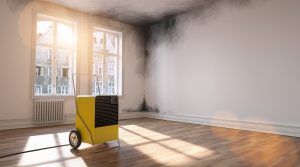
Another critical tool for damage restoration is an industrial-strength dehumidifier. A dehumidifier removes excess moisture from the air, which is crucial for preventing the growth of mold and mildew. These machines are powerful and can extract large amounts of moisture from the air quickly.
A high-quality air mover is also an essential tool for damage restoration. An air mover is used to circulate air and create airflow, which helps dry out wet materials. These machines are designed to move a large amount of air quickly and can be used to dry out carpets, walls, and ceilings.
For removing standing water, water extractors are used. These machines can remove water from carpets, floors, and other surfaces quickly and efficiently. They work by creating a vacuum that pulls water into a tank, which is then emptied manually.
In addition to these essential tools, water damage restoration professionals may also use specialized equipment, such as infrared cameras, to detect hidden pockets of moisture, or thermal imaging cameras, to identify areas of heat loss that may be contributing to the damage.
In conclusion, water damage recovery requires specialized tools and equipment to be effective. These tools help professionals identify the extent of the damage, dry out affected materials, and prevent further damage from occurring. A qualified and experienced damage restoration professional will have access to the tools and equipment needed to restore your property quickly and effectively.
Do Not Open Any Cabinets With Water Damage
The first thing you should do is not open any cabinets or drawers that have been affected by the damage. Mold and mildew can be found in items such as clothes, books, electronics, and furniture; the spores are often white or grayish-white in color. When mold grows on these items it creates an environment that is perfect for other types of bacteria to grow inside them as well. These bacteria can cause health problems such as asthma and allergies if they’re inhaled into your lungs after being exposed to high levels of moisture from damaged carpets, floors, and walls!
Dry Out Your Home
The next step is to use fans and dehumidifiers to dry out your home. Fans should be positioned so that they can distribute airflow throughout the room or area, as well as circulate it from floor level up toward the ceiling. Dehumidifiers are more effective at removing moisture from the air than fans are, but they have their limitations: they only work on horizontal surfaces (like floors) and cannot remove water from vertical surfaces such as walls or ceilings. However, if you’re looking for a solution that will help you get rid of excess moisture in your home while also reducing mold growth over time – then this might be just what you need!
Water Damage Repair Insurance
Water damage is one of the most common causes of property damage and can result in costly repairs. Fortunately, many homeowners have insurance policies that cover the damage. However, filing an insurance claim for damage can be a complicated process.
To start, it’s important to understand what types of damages are covered by your insurance policy. Some policies may cover damage caused by a burst pipe, while others may not cover flooding from natural disasters. Additionally, policies may have specific exclusions for certain types of damages, such as damage caused by mold or slow leaks.
When filing a damage insurance claim, it’s crucial to document the damage thoroughly. This includes taking photos and videos of the affected area, as well as keeping all receipts and invoices for repairs and cleanup. It’s also important to report the damage to your insurance company as soon as possible, as delays could impact the success of your claim.
Public Adjusters For Your Water Damage Needs

When it comes to water damage claims, public adjusters can be especially valuable. They have the expertise to assess the damage and determine the true value of your claim. This includes identifying any hidden damages, such as mold or structural damage, that may not be immediately apparent. They can also help you navigate the claims process, including filling out paperwork and communicating with your insurance company.
Another benefit of hiring a public adjuster for your damage claim is that they can negotiate with your insurance company on your behalf. Insurance companies are often more willing to negotiate with a public adjuster than with the policyholder directly, as the adjuster has the experience and knowledge to advocate for a fair settlement. This can help ensure that you receive the full amount of compensation you are entitled to under your policy.
It’s important to note that public adjusters work on a contingency basis, meaning they only get paid if you receive a settlement from your insurance company. This can provide peace of mind, as you know that your public adjuster is working hard to ensure you receive the best possible outcome for your claim.
Why Choose Us?
When it comes to dealing with damage insurance issues, homeowners may find themselves overwhelmed and frustrated with the claims process. This is where a public adjuster specializing in damage claims can be of great assistance.
Link public adjusters are professionals who are licensed by the state and work on behalf of policyholders to help them navigate the complexities of the insurance claims process. They understand the language of insurance policies and have expertise in assessing and documenting the extent of the damage.
Link Public Adjusters can help you get a fair settlement for your damage claim by ensuring that all damages are properly assessed and documented. They will also negotiate with the insurance company on your behalf, ensuring that you receive the maximum compensation you are entitled to.
Moreover, a public adjuster can also help you understand your policy coverage and limitations, which can be helpful in preventing future water damage incidents. They can advise you on steps to take to minimize the risks of future damages, as well as assist you in filing additional claims if necessary.
In conclusion, damages can be a devastating experience for any homeowner or business owner. The key to mitigating the damage caused by water is quick and effective action. This ultimate guide has provided you with an in-depth understanding of damage restoration, prevention, and repair.
It is essential to take preventative measures to protect your property from damage, such as regular maintenance of plumbing systems and appliances, proper drainage, and waterproofing. In case of damage, swift action is critical to prevent mold growth, structural damage, and health hazards.
Restoring water-damaged properties involves a systematic approach, including water removal, drying, sanitization, and restoration. It is advisable to hire a professional damage restoration company to handle the restoration process effectively.
Remember, prevention is always better than cure, and taking preventative measures can save you a significant amount of time and money in the long run. So, don’t wait until it’s too late; take proactive measures to prevent damage from occurring in the first place. And in the unfortunate event of water damage, act quickly and hire a professional restoration company to ensure that your property is restored to its pre-damage state.
